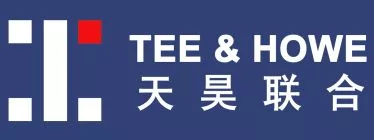- with Inhouse Counsel
- with readers working within the Pharmaceuticals & BioTech industries
Thanks for the notification fromAaron Wininger of Schwegman Lundberg & Woessner, P.A., the China State Administration for Market Regulation SAMR issued Antitrust Guidelines for the Pharmaceutical Sector (draft for comments) on 9 August 2024 at the link below:
https://www.samr.gov.cn/hd/zjdc/art/2024/art_709b7b3bed794e1ca464524d1e5a3dcd.html
The deadline to provide comments for this 30-pages document with 54 articles is 23 August 2024, that is within 14 days from the announcement. (If submission of comments is not desired, I fully understand. As I said many times, if you do not want to listen, just say no and please do not pretend otherwise).
My general feeling is that these guidelines presume that pharmaceutical sellers are by default monopolistic, and whatever you do is just wrong (so why do it at all?). My concerns are with these, pharmaceutical supplies, particularly new ones, may eventually drop in China.
Below are some of my specific observations, withmy comments and questions in italic:
- Article 3(5) – Punishment is by default severe.
- Article 4 – Specific mentioning of monopolistic behavior by taking advantage of data and algorithms, which according to article 17(3) seems to play a role in price monitoring (Just curious, are players in the field using these, for example AI to set prices and/or other selling conditions?).
- Article 6(2) – While the relevant geographical market is generally defined as the domestic market in China, when it comes to pharmaceutical research, development and innovation, the relevant market may be defined as the global market (Would this eventually affect the ultimate pricing calculation?).
- The following acts would easily trigger an agreement to be considered as monopolistic:
-
- Article 8 – Fixing prices.
- Article 9 – Limiting manufacturing or selling quantities.
- Article 10 – Segmenting sales markets or raw material procurement markets.
- Article 11 – Limiting purchase of new technologies, equipment, new technology and/or new pharmaceutical development.
- Article 12 – Actions boycotting transactions.
- Article 13 – Compensation to generics, for example for not challenging validity of the relevant patents, or not entering the market.
- Article 14 – Actions fixing prices, including resale prices.
- Article 16 – Restrictions on region, client, sales channel, time, territory, and where to buy from.
- Article 22 – Unfair high price, including comparing with same or similar pharmaceutical sold by others, and different pricing in different territories(within China I believe, according to article 6)and time.
- Article 23 – Refusal to transact without proper reason, including reduction in manufacturing scale(!), delaying supply, setting high security deposit, and so on.
- Article 24 – Limiting transaction, including implementing punitive and incentive measures to do so.
- Article 25 – Tie up sales.
- Article 26 – Various unreasonable restrictions on purchase quantity, territory, security deposit, and so on.
- Article 27 – Differential treatment, including price, discount, payment method and so on.
- Article 28 – Introducing "new" pharmaceutical products that merely changing the dosage form of the drug or combining two or more drugs into a new drug without significant improvements(This could be a serious problem, as significant improvements are required to be shown to avoid being caught by these guidelines), and being introduced close to full term expiry of the relevant patent or generic has prepared to enter the market.
- Article 15 – Specific exclusions.(However, I do not understand why "entrusting others to act as agents for drug sales", "centralized procurement", and "direct sales with recipients not engaging in reselling" to be specifically excluded, and will be grateful for any education on this.)
- Article 19 – Burden of proof is on the pharmaceutical seller to prove compliance with anti-monopoly law and rules.
- Article 31 – When considering concentration of operators, small and medium size companies may be caught if there is "evidence that the concentration of operators has or may have the effect of eliminating or restricting competition"(OK now everyone is included. The Chinese saying is all are cooked in one pot).
- Article 36 – Measures that could be applied on concentrated operators from SAMR include divestiture of tangible and non-tangible assets (including intellectual property rights, data and so on), undertaking not to terminate R&D projects, maintain R&D investment, license key technologies(These are so encouraging to do pharmaceutical businesses in China).
- Article 38 - Administrative organizations shall not abuse administrative power to limit or covertly limit the operation, purchase, and use of drugs provided by specific operators by means of explicit requirements, implicit, refusal or delay of administrative approval, repeated inspection, denial of access to platforms or networks, and so on(It is interesting to see these recitations, which are familiar to those who have actual living experiences in China).
As always, any thoughts and views are welcomed.
The content of this article is intended to provide a general guide to the subject matter. Specialist advice should be sought about your specific circumstances.


